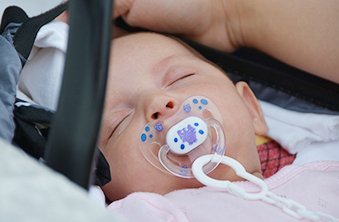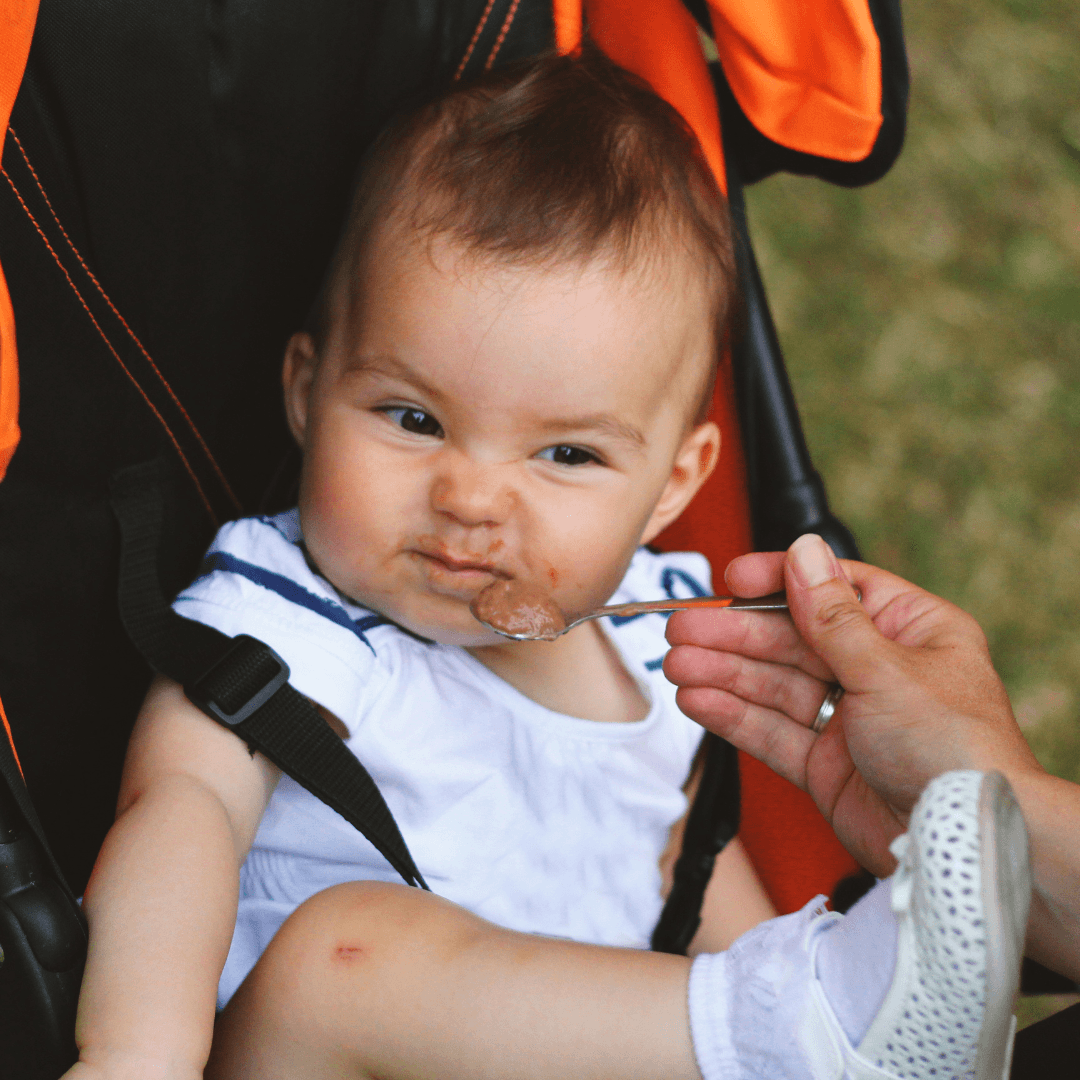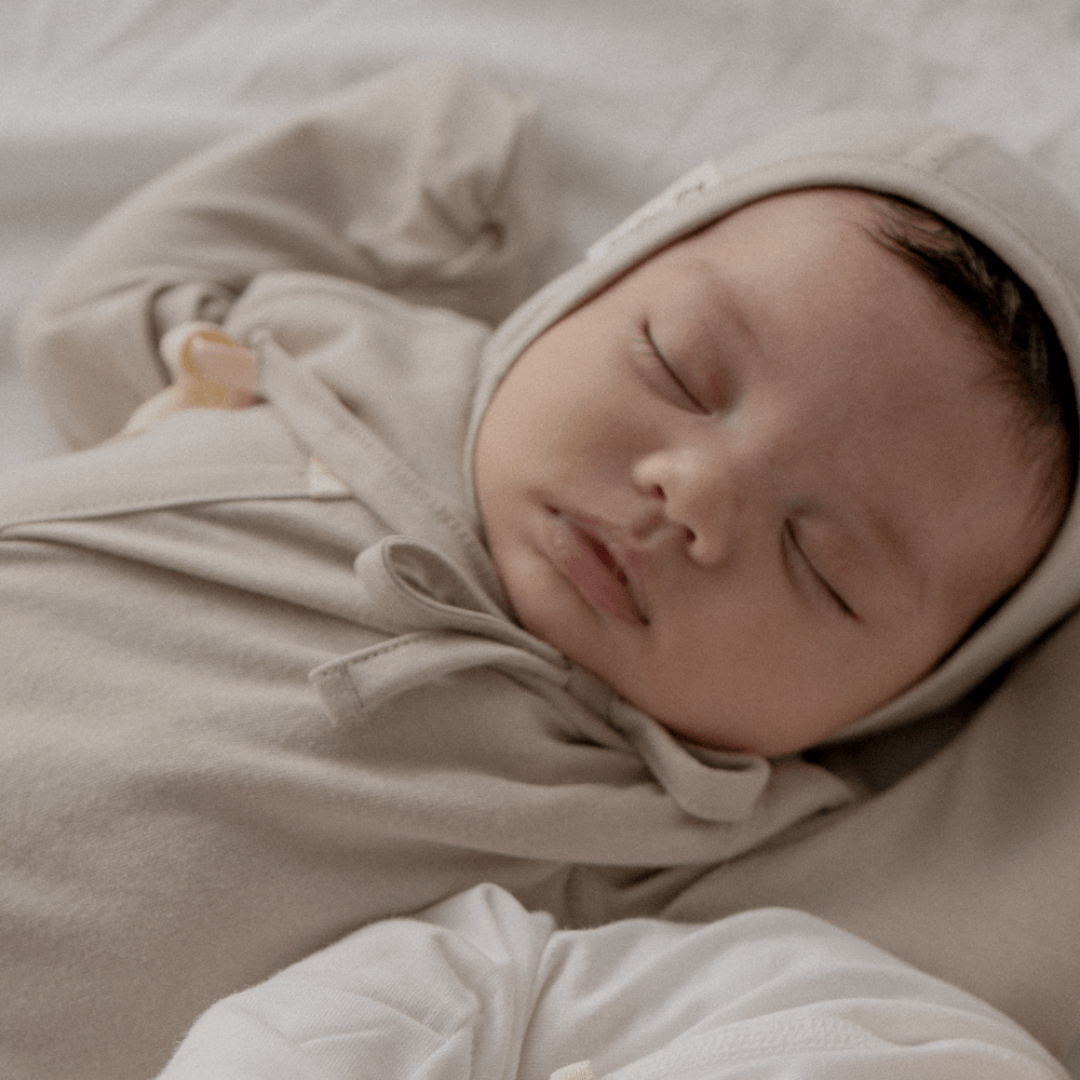
A pacifier is a silicone item that mimics the shape of a nipple and is a soother that satisfies a child's sucking needs.
When a baby is around 4 weeks to 3 months old, the question of whether to use a pacifier seems to start. This is because children at this age have an increased desire to suck, but if you continue to breastfeed or give formula, your child may vomit and experience indigestion, so you might want to use another way of soothing them, such as a pacifier.
Many parents have concerns about using a pacifier. Sucking the pacifier seems to make the child more comfortable, but what if the child's teeth become crooked after sucking the pacifier for a long time? What if their child refuses to breastfeed because of confusion between the silicone nipple shape and the real nipple?
Of course, it is not recommended to use a pacifier when your newborn is at an early age (0-4 weeks for breastfeeding infants). Newborns at 0-4 weeks of age do not have enough strength in their lips to hold the soother by themselves. As mentioned earlier, nipple confusion may occur. However, after 4 weeks of age, children are less likely to confuse their mother's nipple with the pacifier.
It is said that risk of dental problems is low up to the age of 2 years. There is also advice to stop using the pacifier before the permanent teeth emerge at the age of 6 years. Of course, if your child uses the pacifier for a long period of time, you need to constantly check your child's teeth and how straight they are.
If the pacifier is used day and night when the baby cries, it will be a problem, but if only used at the right time (ex. When your child are nervous and can’t sleep, etc.), then the risk of dental issues is reduced.
Why is my baby refusing pacifiers?
1. Is your baby around 4 weeks or 3 months old? At this age, their lips are still not strong enough.
Babies at this age may not have enough lip strength to catch and suck the pacifier on their own. The muscles that suck the mother's breast and the muscles that bite the pacifier move differently.
At this time, it is good for the mother to hold her hand and play with the child. She can put the pacifier onto the baby’s tongue, holding the ring, and shake it gently. This works just like guiding your breast into the child’s mouth when you are breastfeeding.
2. Because the baby is hungry, they may have bitten the pacifier.
If you were hungry and you only had a pacifier in your mouth with no milk, you'd be angry, right? If your child is showing signs of hunger, feed them breast milk or formula.

3 Tips to Use the Pacifier Properly
1. Be sure to disinfect before use.
After washing and rinsing the pacifier with bottle cleaner, sterilise it in hot water if it is made of silicone. It is better to buy several and rotate between them because they need to be washed and disinfected frequently.
2. Set a standard of only using the pacifier when needed.
For example, when your baby seems to want to eat more even after eating a lot, and when they are too sleepy and have trouble falling asleep.
However, do not use a pacifier when your child is playing comfortably during the day, when they is hungry, when their diaper is wet, or when they are crying for an obvious reason. What if they are crying because they want to be hugged by their mother, but they only get pacifiers? This can be very frustrating for a child.
3. Slowly reduce the use of pacifiers from 6 to 8 months of age onwards.
After 6 to 8 months of age, gradually reduce the use of pacifiers. If your child has a strong sucking urge, you can use it for a little longer.
When you're cutting back on pacifiers, it's a good idea to use another toy to temporarily satisfy your child's sucking needs.
If your child is over a year old, let them experience outdoor play on frequent outings. Concentrate on play and forget about pacifier sucking.
# Parenting advice from Director Hyang-Hwa Kwon
Practical Tips
Another way is to reduce the number of times your child uses pacifiers, and get rid of them when your child stops seeking out the pacifiers on their own.
A child may cry for an hour or two while looking for a pacifier, and if you hand over the pacifier at this time, your child may think that if they cry enough, they’ll be able to get the pacifier!
Your child's cries may become more intense and prolonged, but it is important to remember that you need to eventually break the pacifier habit.
It would be nice if the parents are determined to go out all the time and keep the child constantly distracted so they don’t want pacifiers, but it's really not easy.
If you cut the pacifiers with scissors or use some other way of getting rid of them, you are forced to show a determined look. It will be difficult for your child for 2-3 days, but after that, you can see how quickly they will adapt.
Of course, you should not use this method on a baby who has been using the pacifier as much as the previous day. You should have been slowly reducing the use of pacifiers.
My baby has also been using the pacifier until 13 months of age and is growing well with no problems. First, take a look at your child's desire to suck, and try to pacifier use stop slowly.
---------------------------------------------------
Author: Kwon Hyang-hwa
- Newborn Childcare Coach
- IBCLC International Breastfeeding Specialist
- Worked as the director of a postpartum care center for 10 years.







